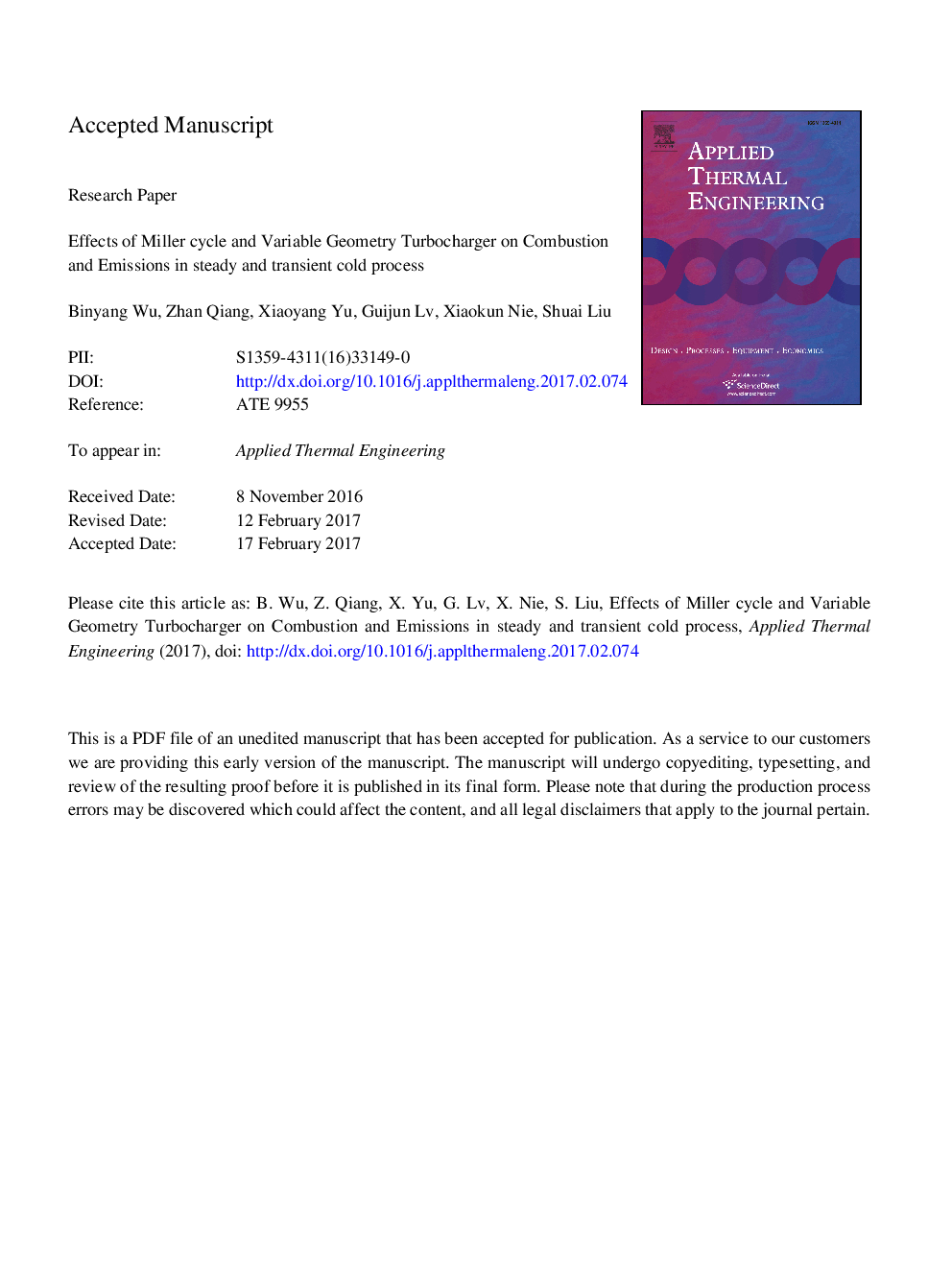| Article ID | Journal | Published Year | Pages | File Type |
|---|---|---|---|---|
| 4991392 | Applied Thermal Engineering | 2017 | 28 Pages |
Abstract
The influence of Miller cycle and variable geometry turbocharger (VGT) on combustion and emissions was investigated in steady and transient operation of a heavy-duty diesel engine. The experiment was conducted on a six-cylinder diesel engine with common rail fuel injection, two-stage turbocharger and Miller cycle. The results revealed that Miller cycle decreased soot and nitrogen oxides (NOx) emissions and increased brake thermal efficiency (BTE) in certain operation. In the steady operation, the intake flow was reduced in a cold condition because the low oil temperature led to the hydraulic mechanism delay intake valve closing timing. However, by adjusting VGT, low emissions of soot and NOx could still be obtained with relatively high BTE. In cold transient process, dynamic response of torque depended on indicated work and gas pumping work. A good trade-off performance could be achieved by maintaining the initial VGT rack position for 0.5Â s. Compared to VGT variation under the steady-state map, soot peak emissions were reduced by 50% with NOx emissions nearly unchanged by VGT control strategy 3 and Miller cycle. Compared to diesel conventional cycle, the combination of Miller cycle and VGT control strategy 3 can not only ensure quick dynamic torque response, but also reduce NOx peak emissions by 10% with slightly increased soot peak emissions.
Keywords
Variable geometry turbochargerVGTEGRLIVCHCCIIVCTIMEPBMEPNOxEmissionNitrogen oxidesbrake mean effective pressureVariable geometry turbineBrake thermal efficiencyRoHRHomogeneous Charge Compression IgnitionTransient conditioncarbon monoxideRate of heat releaseEquivalence ratioIndicated mean effective pressureBTEDynamic responseMiller cycleexhaust gas recirculation
Related Topics
Physical Sciences and Engineering
Chemical Engineering
Fluid Flow and Transfer Processes
Authors
Binyang Wu, Qiang Zhan, Xiaoyang Yu, Guijun Lv, Xiaokun Nie, Shuai Liu,
